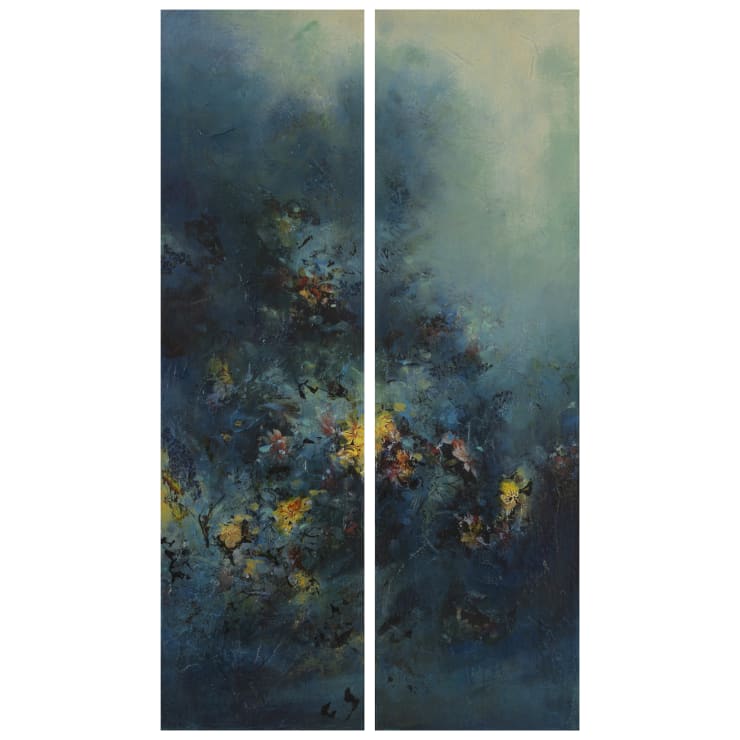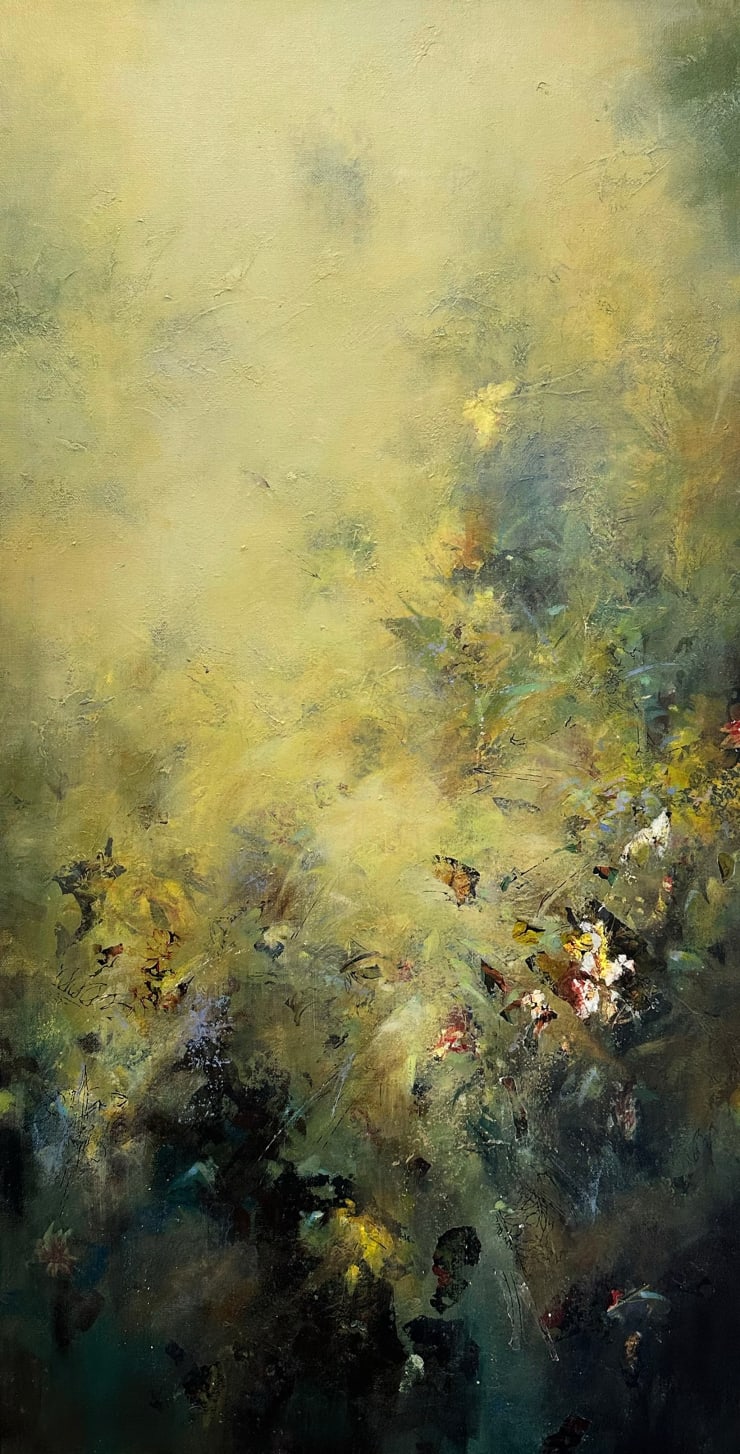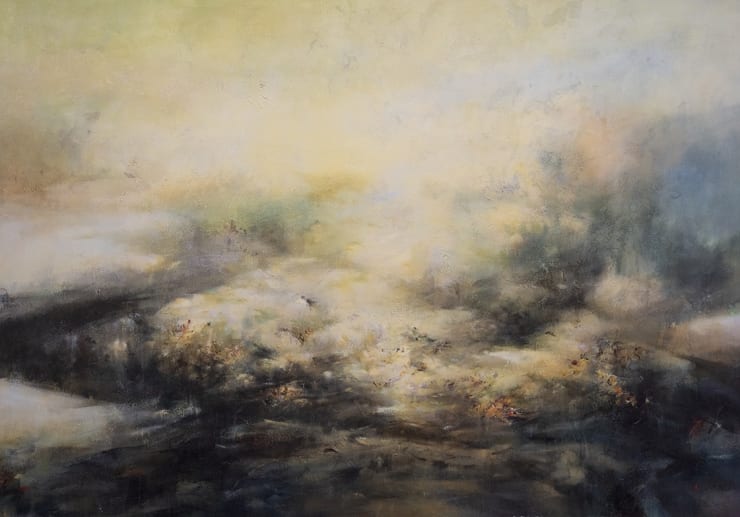Kan Hung-Ju: One Must Imagine Sisyphus Happy
LATITUDE Gallery is delighted to present One Must Imagine Sisyphus Happy, an exhibition featuring the latest paintings by Kan Hung Ju. The showcase will be held at 64 Bayard St, and will be open to the public from April 3rd to May 2th, 2024. This marks Kan's first solo exhibition with the gallery.
As Sisyphus reached the mountain's base once more, the absurdity of his fate weighed heavy upon him. Gazing up at the towering peak, he whispered to himself, "Once more, then.", a spark of defiance ignited within him. With each step, he embraced the futility of his labor, yet found solace in the act of rebellion against the whims of the gods. Each preposterous step was a rebellion against fate itself, a declaration that he would not be broken by the gods' cruel punishment. And so, with each repetition, he reclaimed a shred of autonomy, transforming his suffering into a defiant act.
The exhibition title references Albert Camus’s, “The Myth of Sisyphus” to respond to the absurdity of life that Kan feels. It states the very question to him– the why of our life. The repetitiveness of life, Sisyphus pushes the stone up to the mountain, mirroring the monotonous rhythms of our day-to-day routine, ultimately, we all fall into the same rhythms. Kan Hung Ju attempts to counter this relentless cycle of repetition with his work. He perceives himself as a receptor for the world's intricacies, dissecting nature, existence, and the fragments of memory in pursuit of unraveling the essence of human existence. There may not be an objective correct answer, but there is always a subjective proper answer. His work is a collective attitude he has towards life, recognizing its potential as an endless journey leading to no specific destination. Yet, amidst this uncertainty, he finds purpose in persistently pushing the stone to the crests of various hills in his life. Resembling debris of the past, he weaves his memory and the cultures into the panel, crafting an alternate universe where he can adapt to reality on his own terms. Life becomes a canvas for reinterpretation, he translates his emotions and observations from daily life into another visual language: the delicate hues of seasons, a petal etched in memory, or glimpses of cities.
With One Must Imagine Sisyphus Happy, Kan continues his exploration of his long-standing series Wildflower Series and Density Versus Emptiness. With the training in traditional Chinese ink painting and education from Massachusetts College of Art, Kan adeptly merges Eastern and Western perspectives on color and space in a manner reminiscent of the British Romantic School painters. He orchestrates light and dark contrasts and rhythmic color patterns in abstract spaces, showcasing the fusion of Eastern and Western visual expressions in his brushstrokes, harmonizing their respective interpretations of "less is more." Meanwhile, he preserves the philosophical essence of Eastern white space, described as " obscure and vague, yet within it there is form," seamlessly imbuing it with a Western visual aesthetic. Guided by the ethos of "less is more," Kan employs the concentration of acrylic and layers and blends subtle colors to imbue depth into his work. He adeptly navigates the interplay of two- and three-dimensional space in the panel, utilizing his way of negative space to craft compositions that intrigue and captivate. Kan further incorporates Baimiao, a traditional Chinese painting technique, to delicately outline the contours of flowers, crafting a self-contained floral ensemble that sculpted the painting's space into another dimension. The resulting juxtaposition of delicate and dynamic brushstrokes within his works embodies the harmonious convergence of Eastern and Western artistic philosophies.
Each individual's visual perception is shaped by their unique experiences. Kan’s painting is akin to extracting fragments of the world as he perceives it within his own sphere of existence, meticulously assembling these fragments to construct the contours of his cycle of daily life. In a journey without knowing the end, Kan uses his art to transform the attitude towards life. While Sisyphus pushes his way up the mountain again and again, and Kan stacks the brushes one on top of another, day after day, until they burst forth in bloom, bearing the fruits.
– Iza Tseng





